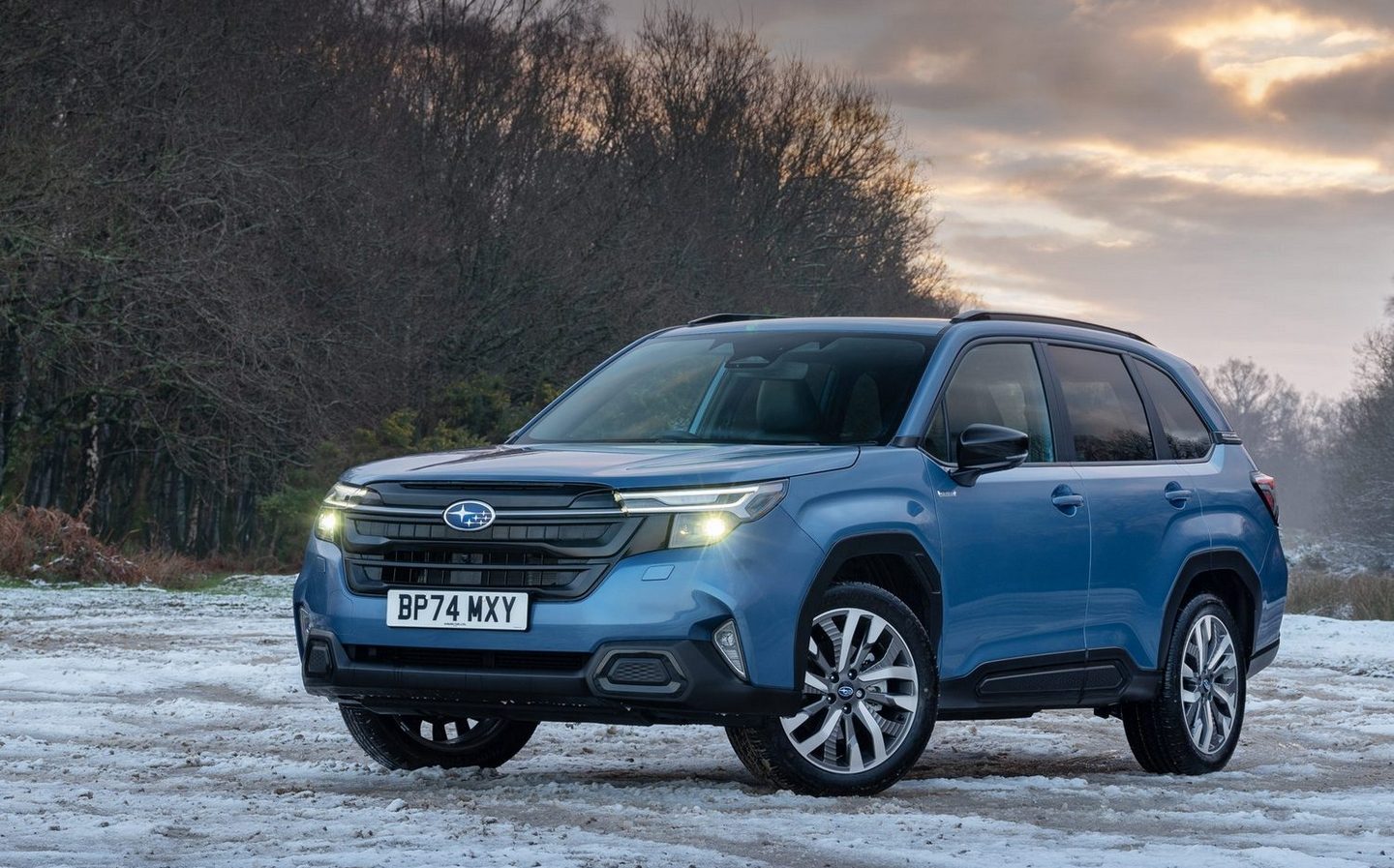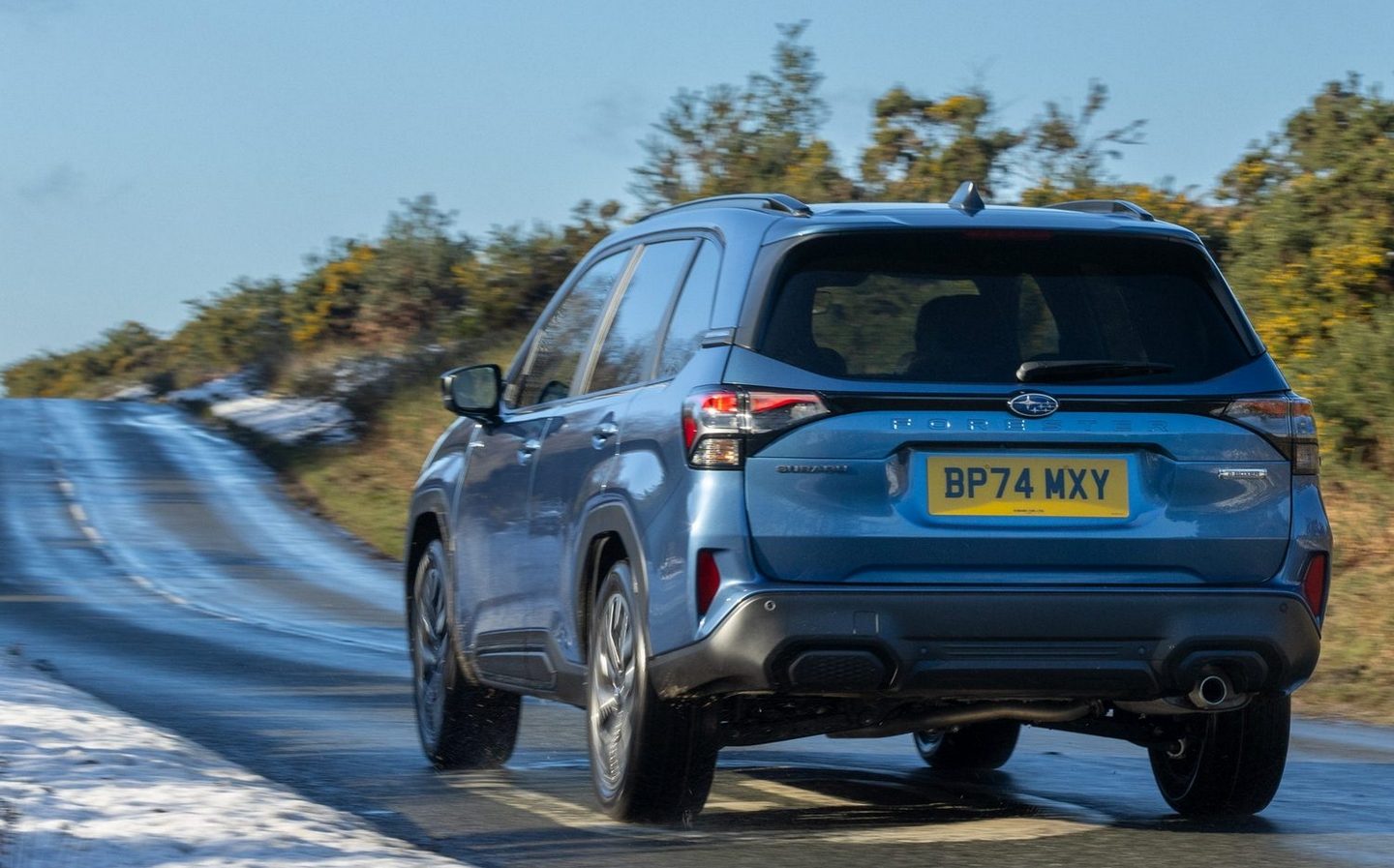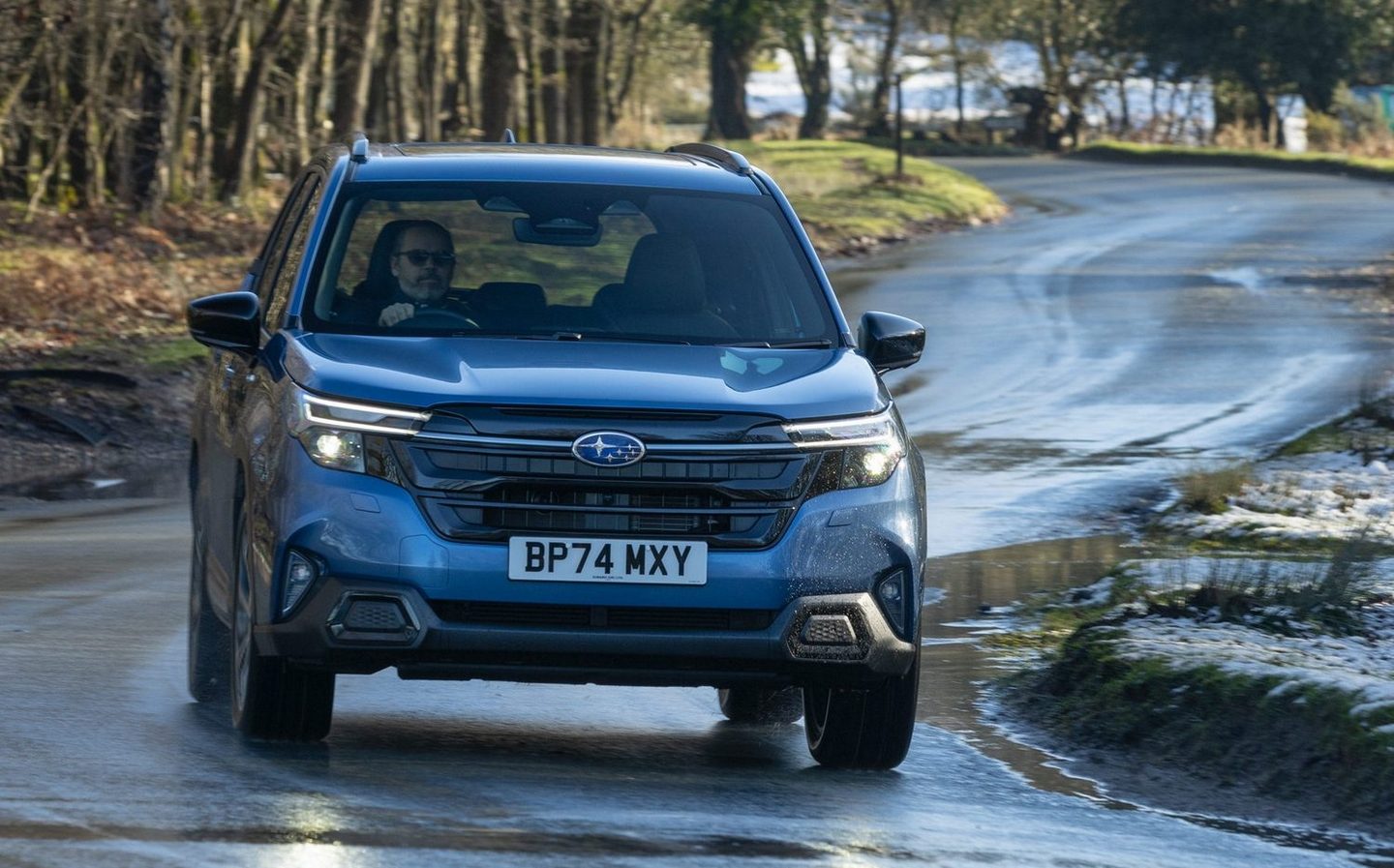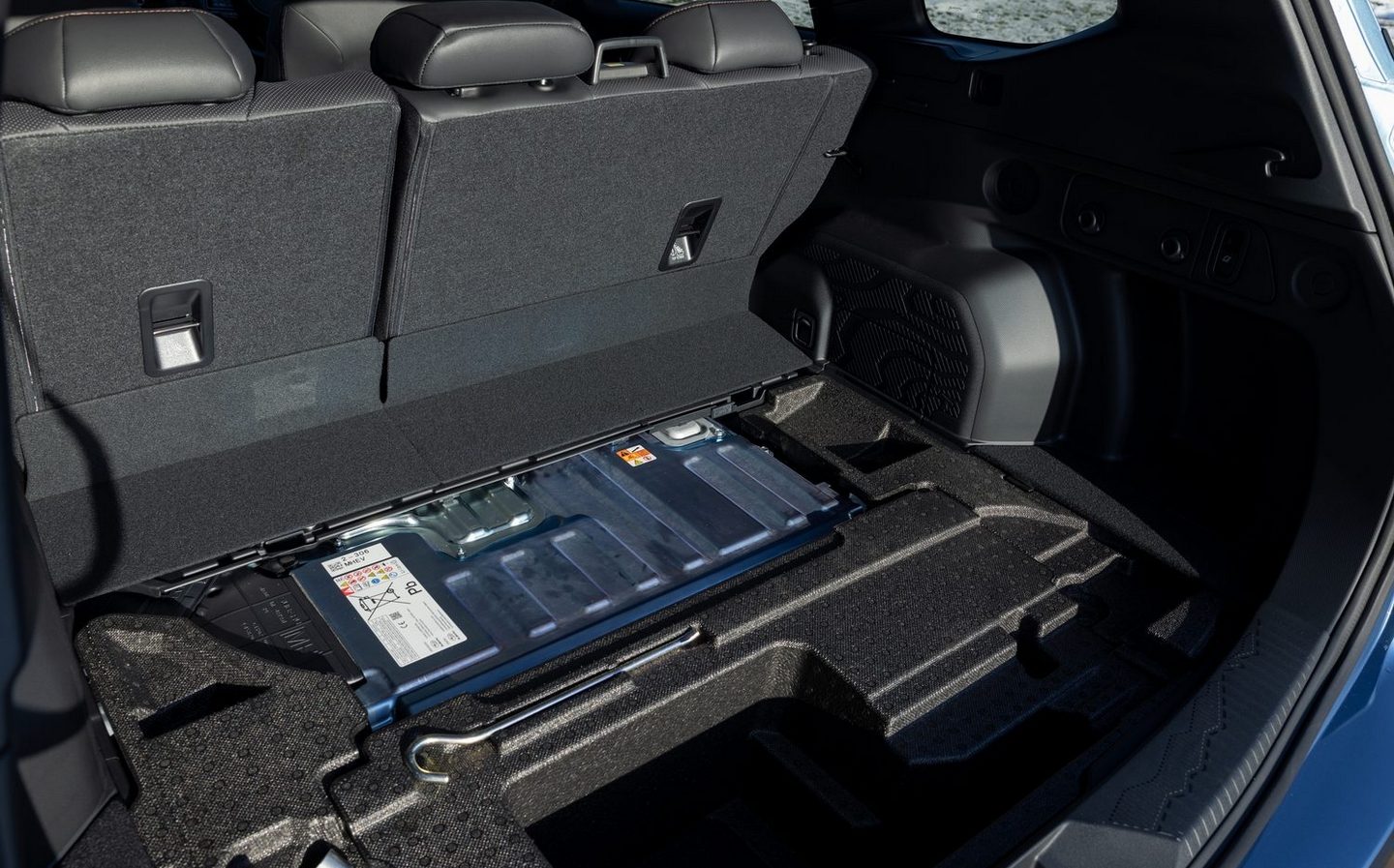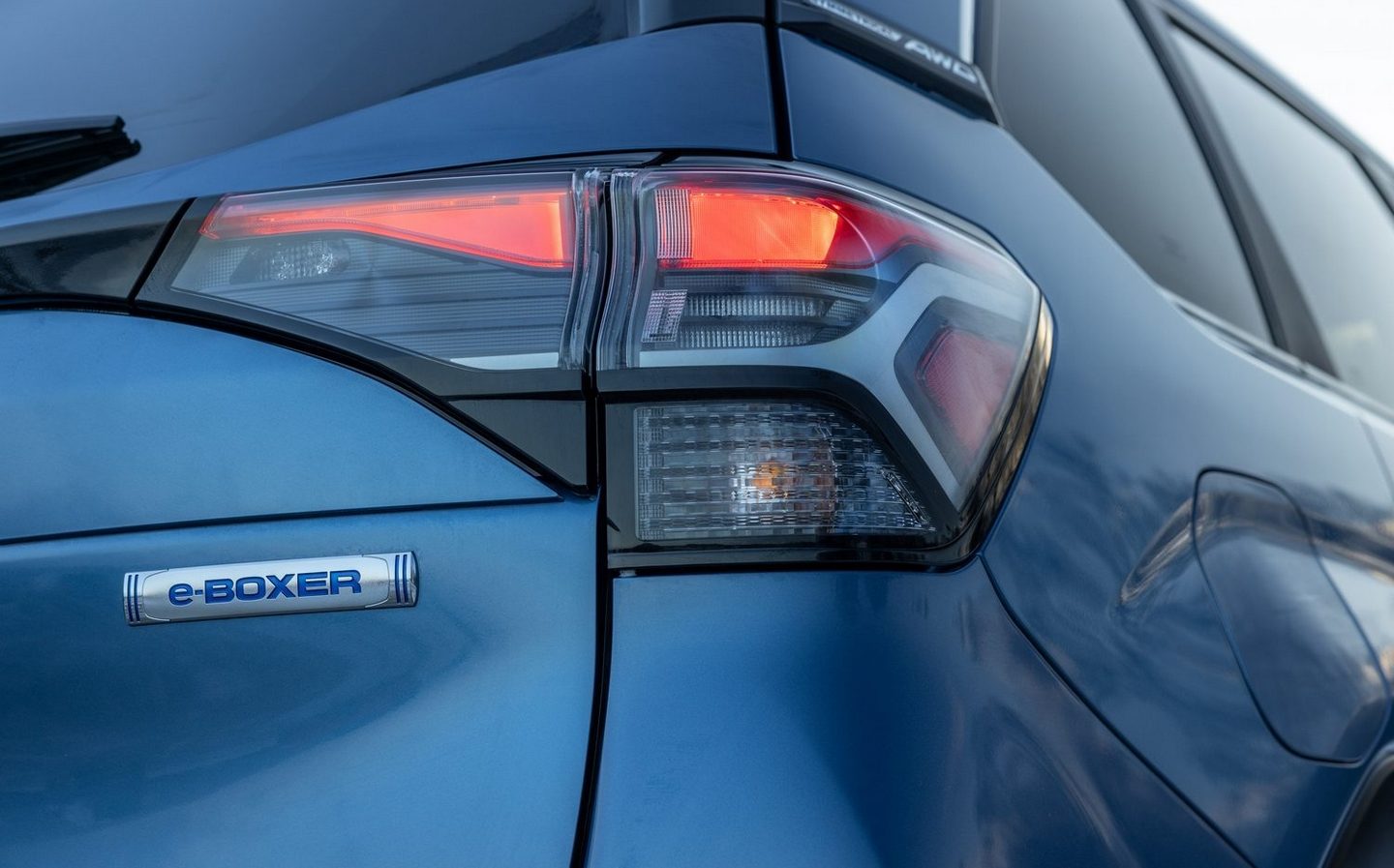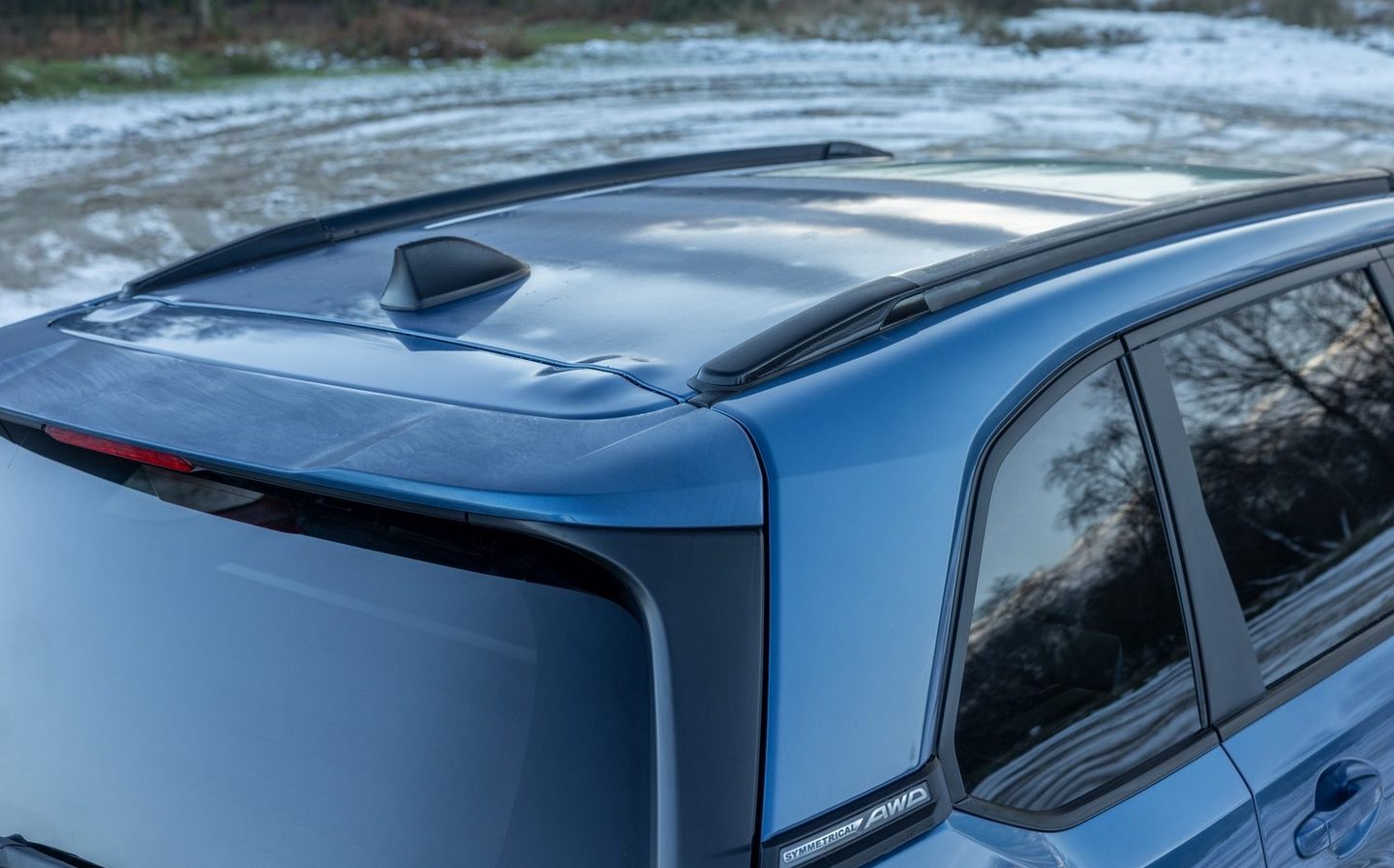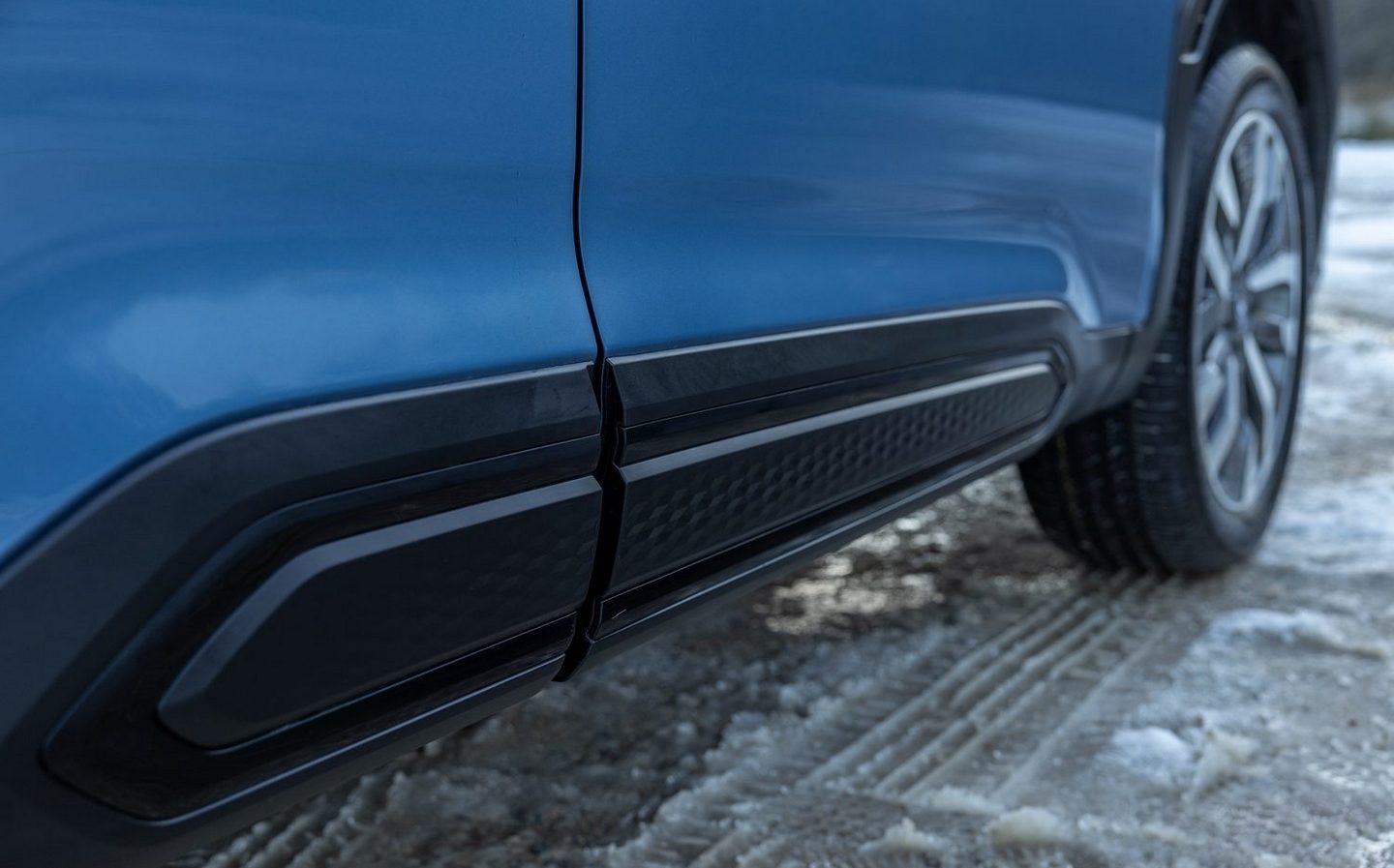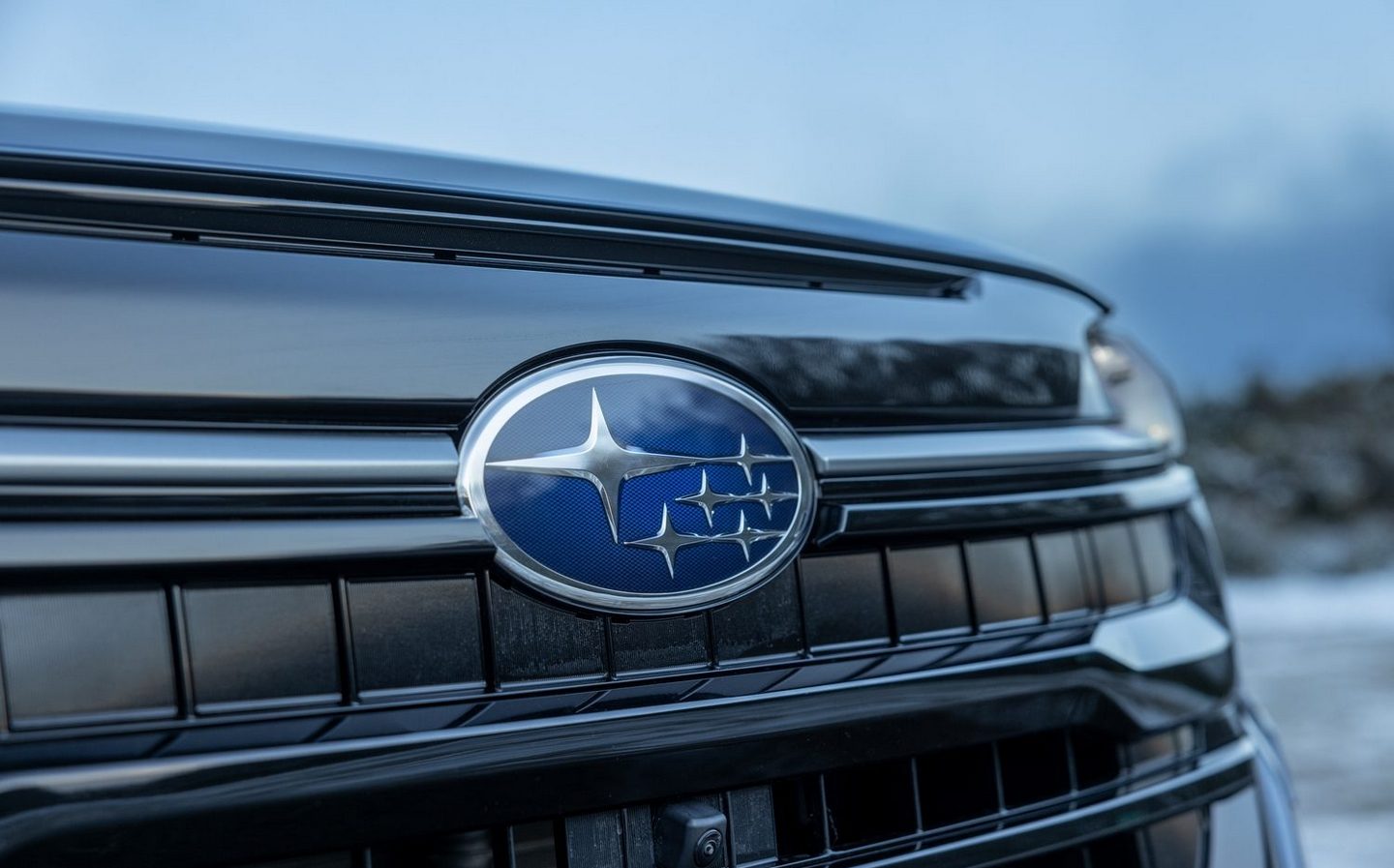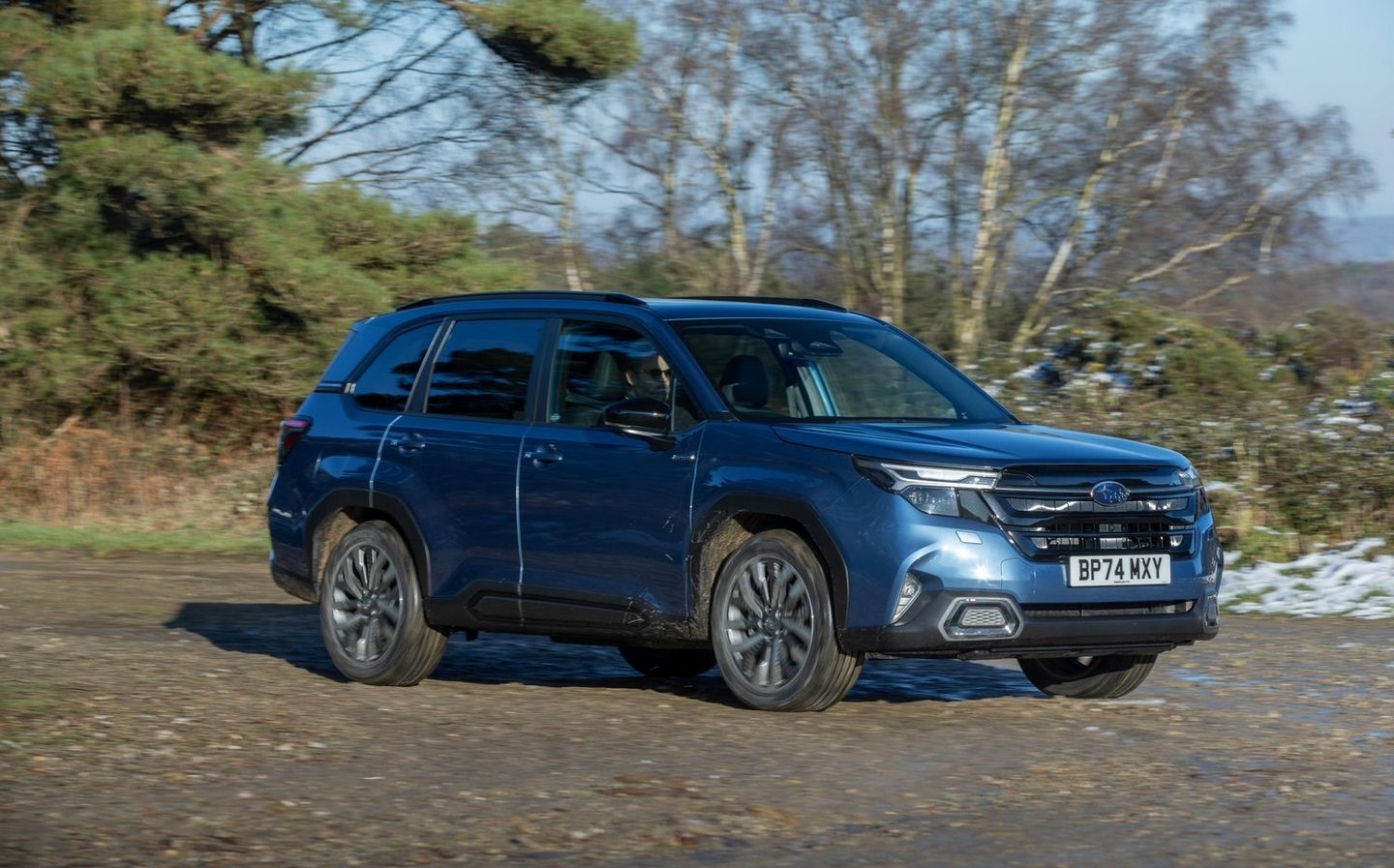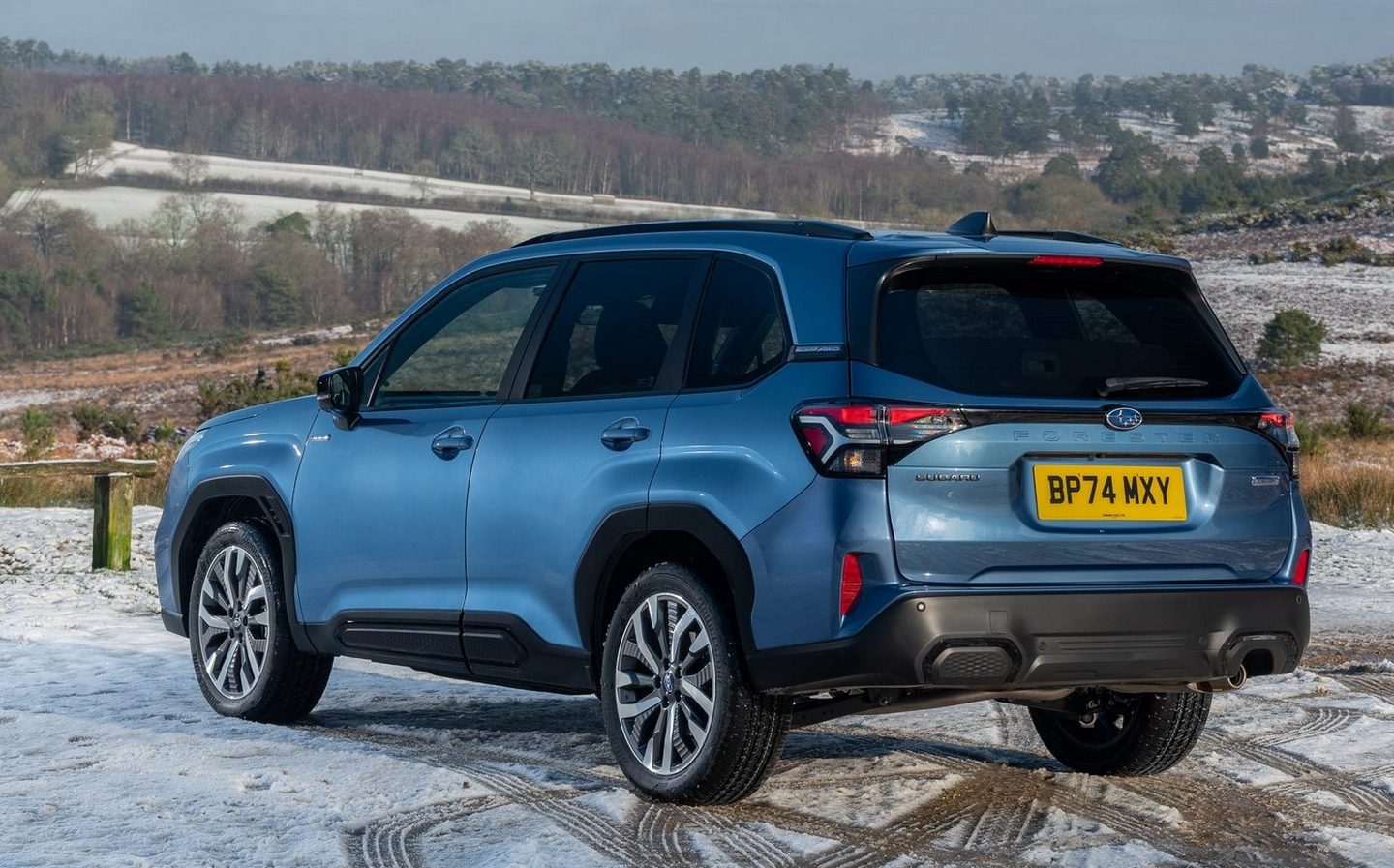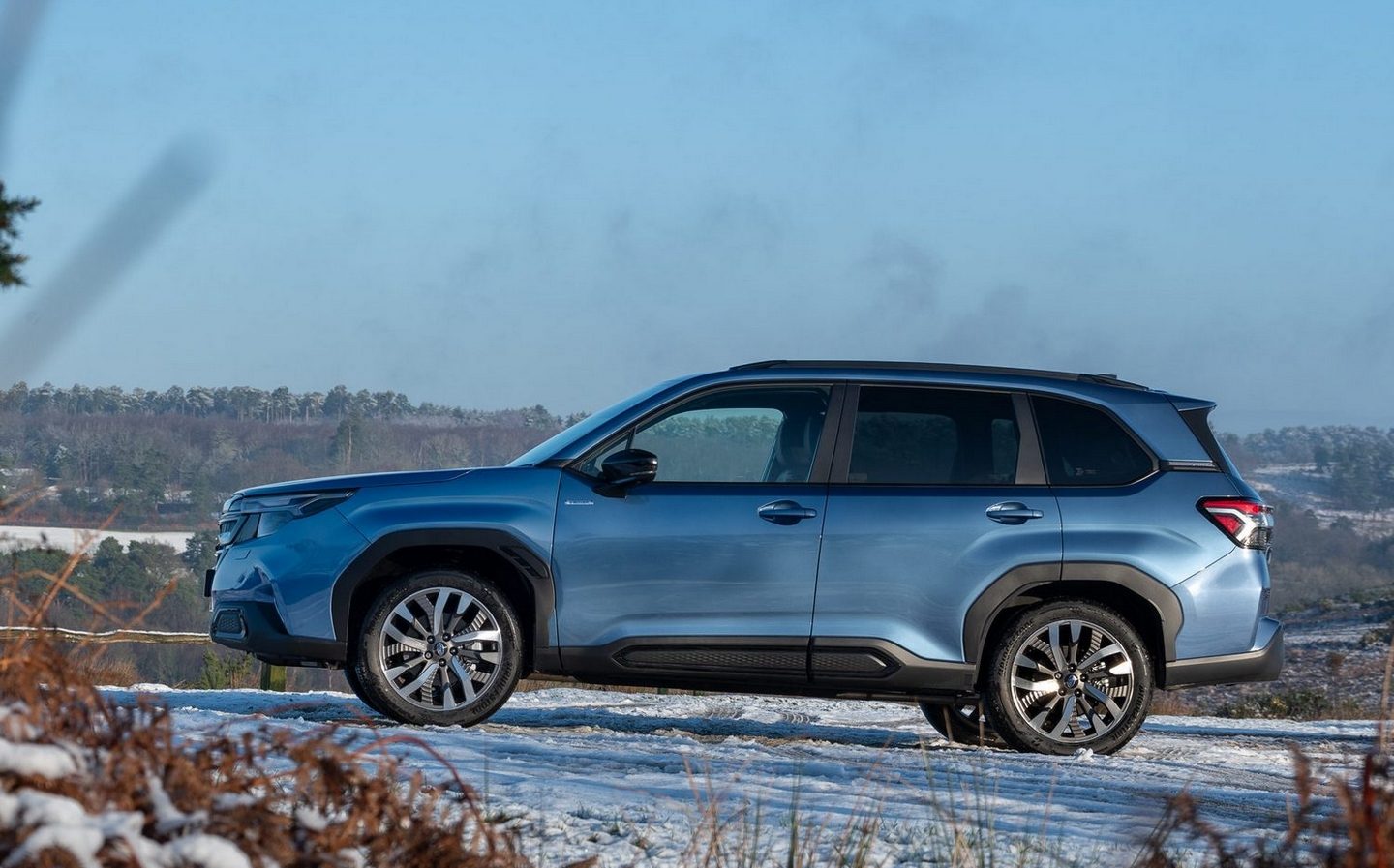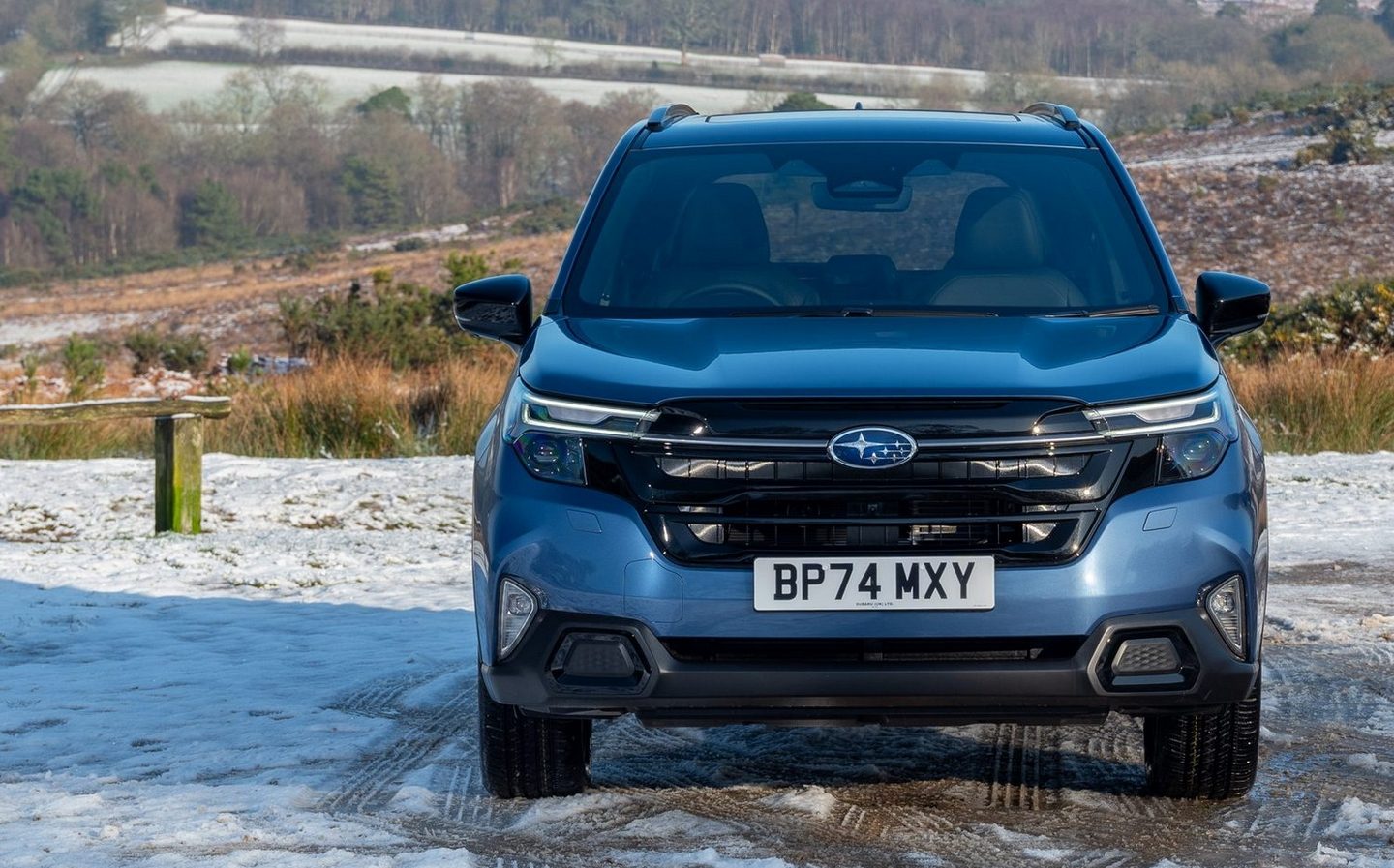Subaru Forester 2025 review: Improved, but still hard to recommend
No gold wheels to be seen on the options list
It’s fair to say the Subaru brand is not what it once was. For many of us, the mere mention of the Subaru name conjures up images of a blue-and-yellow Impreza with dust billowing from its gold-filled wheel arches as it slides around a rally stage. But the modern brand is significantly more sedate than that.
These days, Subaru’s best seller is the Outback, a car that can’t decide whether it’s an estate or an SUV, and the customers are more likely to live on a country estate than a council estate. Not that Subaru has all that many buyers from either walk of life in the UK these days. A pitiful 2,419 examples were sold over here last year, putting Subaru well behind pretty much everyone. Dacia sold almost as many cars as that in January alone, and even the likes of Polestar and Cupra are easily outpacing Subaru. As KGM (formerly Ssangyong) has pointed out, though, keeping sales below 2,500 means a brand can dodge the government’s mandated quotas for electric cars.
Yet while the magic touch of Colin McRae, Richard Burns and the WRC in the 1990s is clearly wearing off, some things remain the same. Namely Subaru’s insistence on offering all-wheel drive and its taste for flat-four cylinder “boxer” petrol engines.
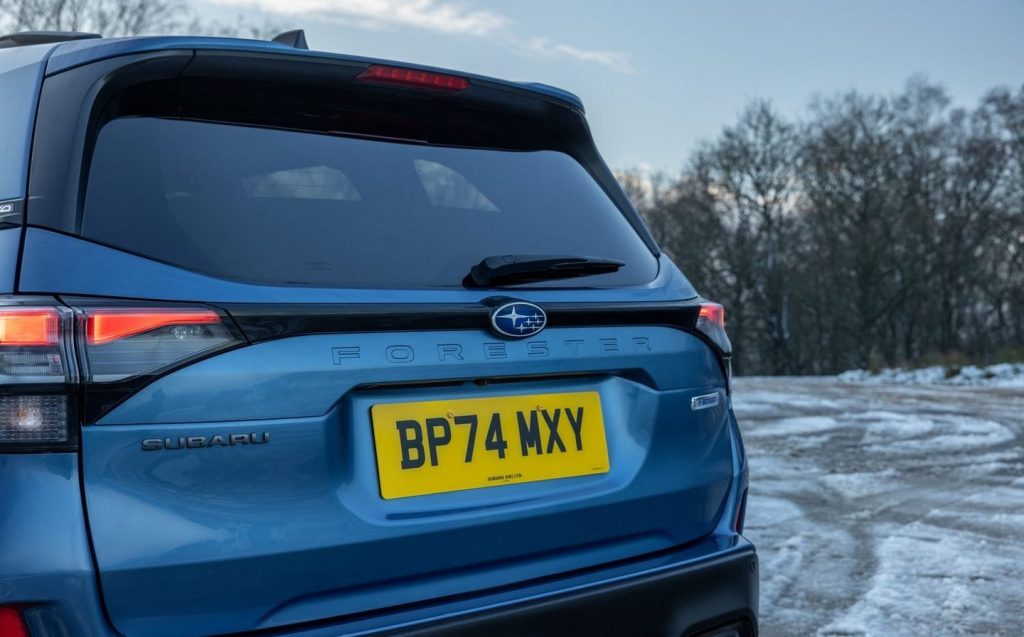
Another hangover from Subaru’s late-1990s heyday is the Forester, which has boldly soldiered on since 1997, often playing the part of the Outback’s very ugly sibling. Despite the arrival of the competent Solterra electric car and the mind-numbing compact Crosstrek (formerly the XV), the Forester remains the brand’s second most popular model. Clearly it holds some appeal for the type of people who buy their cars from family-run dealers in rural Britain, rather than from start-up leasing companies in nondescript northern office blocks.
Quite why it has had such appeal is anybody’s guess. Yes, the outgoing model was dependable, and it drove acceptably, but it was pricey, the technology would have seemed archaic to Aristotle and the ride was best described as “lumpy.” All we can think is that the promise of bomb-proof reliability, all-weather mobility and loyalty to a dealer are important to someone who spends most of their time battling leaks in the roof of a dilapidated country house miles from civilisation.
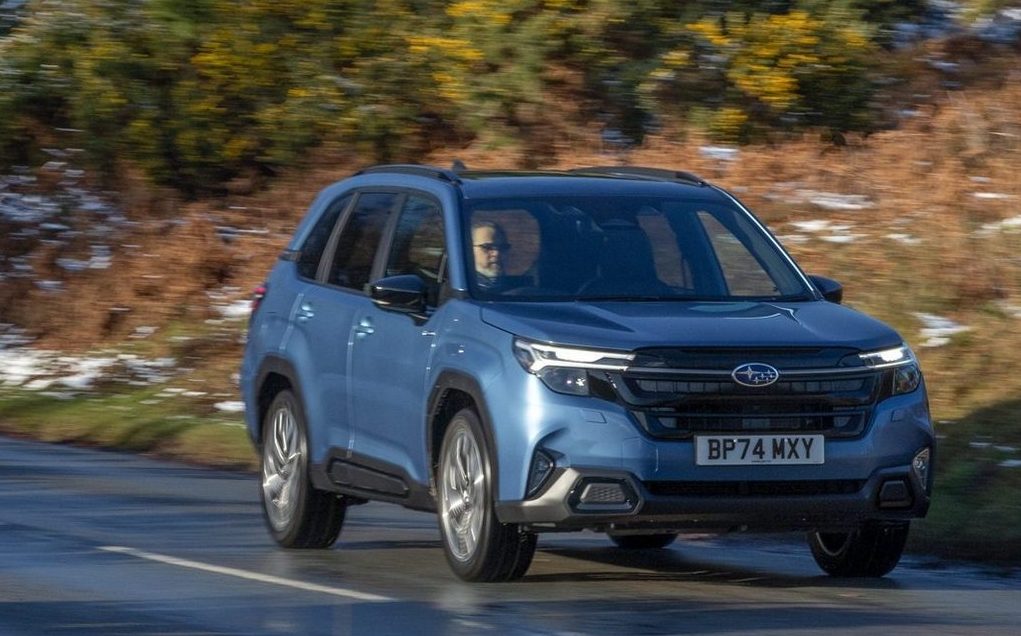
And for all the Forester’s reliability and dependability, it’ll take more than that for Subaru to increase its appeal. And make no mistake, Subaru wants to do just that. The company freely admits it hopes to steal customers away from Toyota after the brand made the RAV4 plug-in hybrid-only.
To give it the best possible chance, the updated Forester has been given fresh styling, an upgraded hybrid powertrain and some updated technology. It all sounds promising, doesn’t it? I thought so too, and then I sat in the driving seat…
Subaru has managed to make a theoretically “new” car feel old before its time, with a massive new touchscreen that takes its graphics from a PlayStation2 and analogue dials in front of the driver, even in the most generously specified version.
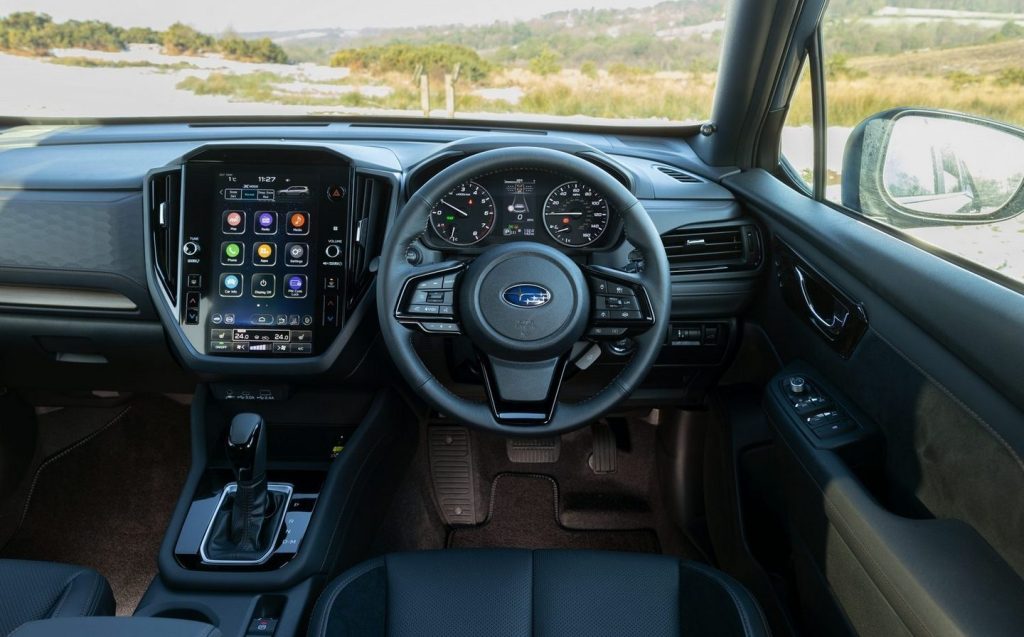
Some drab-looking and cheap-feeling materials pervade, too, and though the cabin is quite light and airy in many ways, with lots of glasswork to let the light in, the sheer quantity of buttons makes it feel more claustrophobic than it should.
Admittedly, some might argue that the Subaru is little worse than the Toyota RAV4 on that front, and they might have the beginnings of a point, but while the Subaru is undoubtedly solid and robust, it’s nothing like as pleasant inside as the Mazda CX-5, Audi Q3 or VW Tiguan.
Nor is it any more intuitive to operate. Yes, Subaru should be commended for keeping temperature control buttons and for improving the old Forester’s naff touchscreen, but it still isn’t all that easy to use. The screen reacts fairly quickly to your inputs, which is a small mercy, but you still need to interact with it for some functions that probably ought to have buttons. And conversely, some buttons perform functions that could probably be managed by the screen.
So far, then, so disappointing. And then we come to Subaru’s brave new look. Yes, the new Forester is considerably more handsome than its predecessor, but that’s damning it with faint praise. The old car couldn’t have been much uglier. And there are still some awkward bits of design, such as the way there’s a kind of blanking plate in the rear bumper to cover the fact it was clearly designed to have two tailpipes.
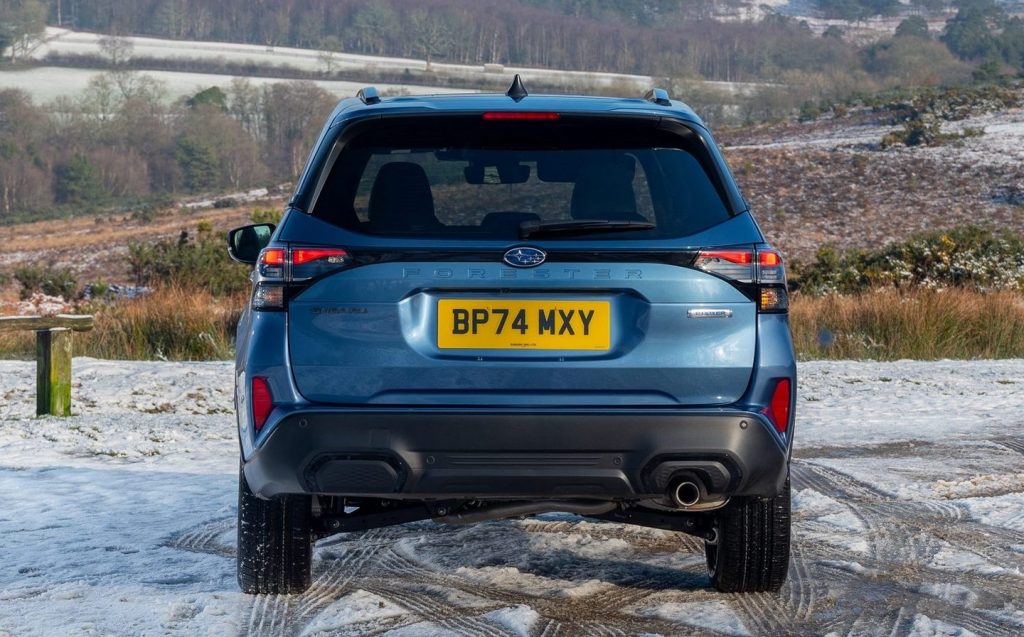
Overall, though, it’s much more conventional and therefore less ugly than the old car. The new lights look smart enough and they’re nicely integrated with the new front grille, which is definitely an improvement. It gives the car proportions that are more befitting of an SUV, too, which is another improvement.
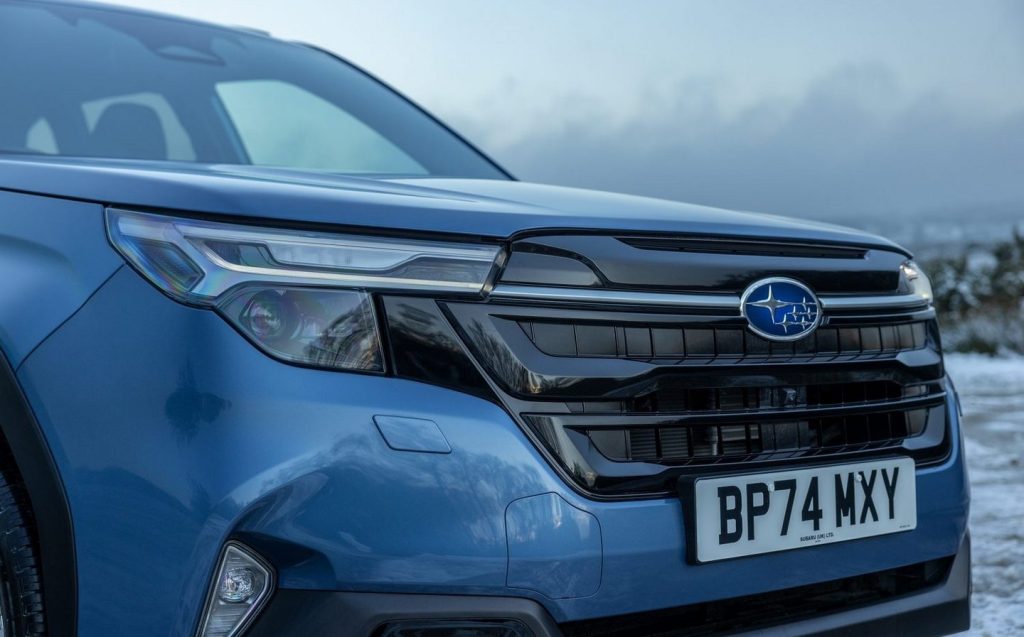
And despite its more attractive shape, it’s no less useful than before. The space in the back is pretty generous, especially in terms of legroom, and you’ll have no trouble getting four adults into the car. You should also be able to fit child seats without any issues.
Boot space is respectable, too, with enough space back there for the dog to come along for the ride. And your four-legged friend will have just as much space as it would in a Mazda CX-5.
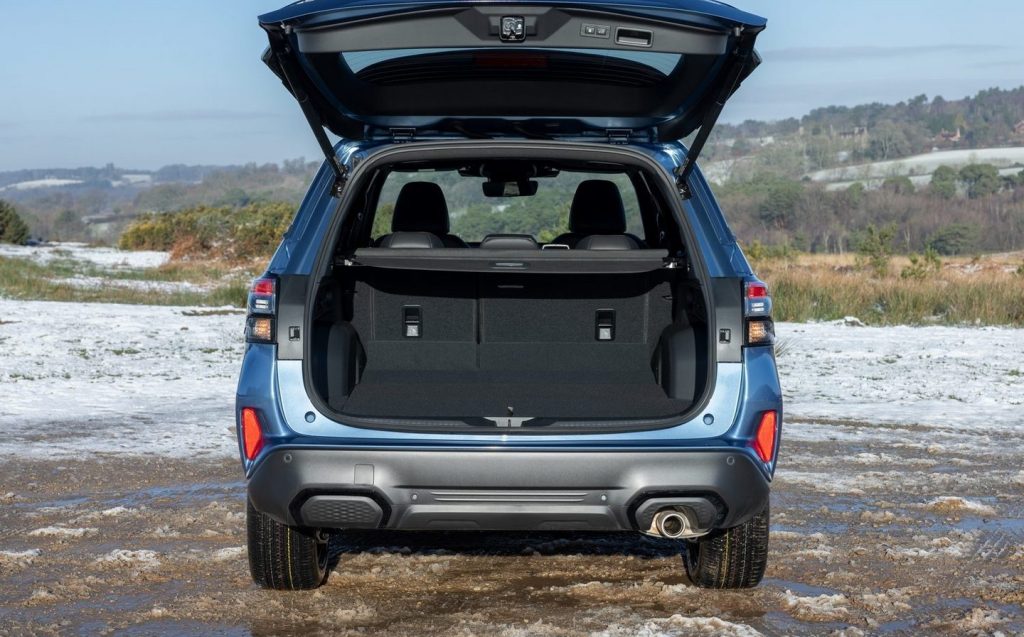
What you won’t get in a Mazda CX-5, though, is a hybrid powertrain, and that comes as standard in the Forester. Not that we’ve been that enamoured with Subaru’s e-Boxer system over the years. Combining a 2-litre flat-four petrol engine (good) with an electric motor and the Lineartronic hybrid transmission (less good), it was never that efficient or that powerful.
In fairness, the problem was the transmission, which simply gave the old Forester the uncanny ability to make a lot of noise without providing any noticeable acceleration. The new model has been retuned to make it more refined, and the improvements feel to have worked when behind the wheel.
The figures would suggest otherwise, mind you: the 134bhp output is remarkably down on the old car’s 148bhp. It’s still distributed symmetrically between all four wheels as standard, and you still get a continuously variable transmission (CVT), none of which sounds especially promising. But on the road, the entire system is smoother, both in terms of noise and power delivery. It somehow feels a bit perkier, too, which helps to make up for the lack of character of that four-cylinder engine.

Unforgivably, it still isn’t that efficient, despite being a hybrid. Official figures peg it at 34.9mpg, which wouldn’t be great even for a traditional petrol-powered SUV, and real-world economy in the low thirties is not going to keep you away from the Shell station. And don’t even get me started on CO2 emissions rating, which will not be attracting company car drivers any time soon.
As well as twiddling with the bits under the bonnet, Subaru has tweaked the car’s suspension and chassis, although that was arguably one of the areas in which the old Forester performed best. That said, it was never especially comfortable, and the tweaks have made it ride a little more smoothly, particularly over longer-wavelength bumps such as sleeping policemen. Occasionally, it feels as though the springs are a bit too sluggish to respond to the sharper imperfections such as potholes, but the ride is much more absorbent than before.
It’s no better to drive, though, and the body control is a little wayward in corners and under braking, while the steering is hopelessly light and numb, despite Subaru’s claims that it provides more feedback than before. So, while there’s plenty of grip and the Forester holds on pretty well in the corners, it doesn’t feel like a car with rally heritage. Instead, it feels a little bit American.
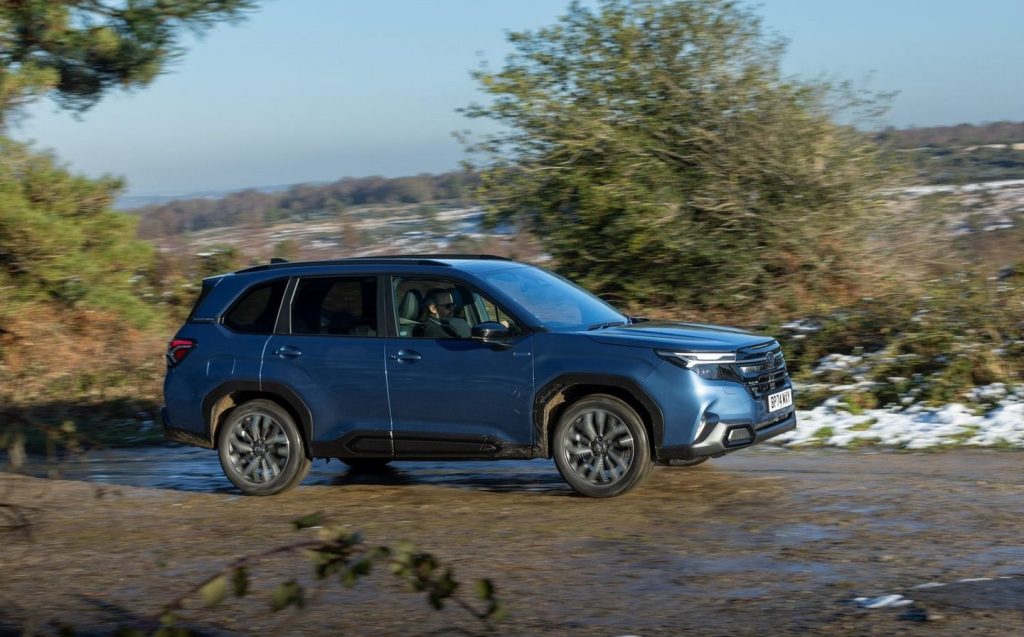
Yet for the modern Subaru customer — the one with a farmhouse in the Dales — handling is much less important than off-road capability, so axle articulation and ground clearance hold more appeal than cornering prowess. For the target market, then, the Forester delivers, with the standard all-wheel-drive system providing ample traction, and the light steering that irritates on a good back road proves useful when you want to manoeuvre at low speeds.
It isn’t all bad, then, and were it disgustingly cheap, we’d be lauding its comfort, space and solidity. But it isn’t. At almost £39,000 for the most basic model, the Forester is about £8,000 more expensive than the cheapest Mazda CX-5, and though the Subaru comes with hybrid power, all-wheel drive and a huge amount of standard equipment, you can have a pretty high-end CX-5 for much the same money — which it’s a much more luxurious thing.
Admittedly, with so much included as standard, there isn’t much of a gap between the cheapest and most expensive Foresters, so the £42,995 asking price of the range-topping Touring model is only a few hundred quid more expensive than that of the most expensive CX-5. But the Mazda has a more efficient and more powerful 2.2-litre diesel engine, a better gearbox and a smarter cabin, as well as better technology and handling. It makes the Subaru a bit tough to justify.

And therein lies the problem with the Forester. It might be a useful car, and it’s obviously capable off-road, but we were hoping for a bit more from this update. It feels like a heavy facelift and that just isn’t enough to make inroads in the family SUV market.
It’s a shame, because I quite like the idea of the Forester — a properly rugged and robust mid-size 4×4 will have appeal for those in the deepest, darkest areas of the countryside –— and I’ve no doubt those who loved the old car will be very happy with its noticeably improved replacement. It just feels as though it could (and should) have gone further.
Related articles
- If you were interested in our review of the Subaru Forester, you might also be interested in how the 1970 launch of the Range Rover went down — in the words of a journalist who was there
- And check out our guide to five of the best plug-in hybrid SUVs available to buy
- Also, here are five of the best winter tyres and where to buy them
Latest articles
- Should I buy a diesel car in 2025?
- F1 2025 calendar and race reports: The new Formula One season as it happens
- Zeekr 7X AWD 2025 review: A fast, spacious and high tech premium SUV — but someone call the chassis chief
- Denza Z9GT 2025 review: Flawed but sleek 1,062bhp shooting brake from BYD’s luxury arm
- Extended test: 2024 Renault Scenic E-Tech review
- Best-selling cars 2025: The UK’s ten most popular models of the year so far
- Audi A6 Avant 2025 review: Trusty executive estate ticks expected boxes, and there’s still a diesel option
- Keir Starmer eases pressure on carmakers to sell EVs in response to ‘global economic headwinds’
- Ferrari 12Cilindri Spider review: Heady blend of traditional and futuristic becomes even more intoxicating after lid is removed


